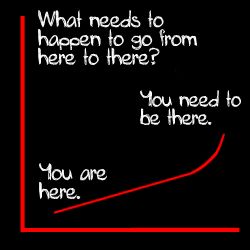Setting Content Marketing Objectives

Content Marketing Objectives
Understand, Plan, Implement, Measure & Adjust
Before a business decides what content to create and optimize it is important to take a step back and ask an essential marketing question, “What are we trying to do? or . . . What are we trying to accomplish? The answer is often obvious “We’re trying to get more people to buy what we are selling!”
This statement is true for most companies but this statement is too broad. It is not focused. Practical online marketing objectives will be unique to each company’s individual situation where the statement above could perhaps apply to all companies.
The role of content marketing works across departments. The interaction between departments can be critical. Good coordination between departments can amplify overall business outcomes. Consider how a content marketing effort could be enhanced with the Marketing Department working well with public relations, customer service and even recruiting. A strong coordinated effort can be mutually beneficial for each group while increasing the business position of the company as a whole.
Some companies want to increase the number of customer transactions; some are more focused on profitability; other desire repeat sales and customer retention. These are all worthy business objectives and from a content marketing perspective being able to connect marketing objectives to overall business goals is essential. Business objectives are more easily achieved with a coordinated effort where multiple groups or departments have input, investment and buy-in to the effort.
The process of establishing marketing goals starts with a good understanding of current business performance and the effort to acquire and retain customers. Content marketing needs to content with SEO and social media. Here are some ideas for key performance indicators that relate nicely to a content marketing effort.
- Search visibility
- In-coming website and blog links
- Citations by others
- Social Shares
- Social Links
- Visitors to your center of content (website & blog)
- Visitors to other company social destinations
- Newsletter subscribers
- Blog and social content subscribers, fans, friends and followers
- Blog comment and other engagement measurements
- Reviews and ratings
The list above needs to be refined for each company and situation and plans with objectives which are defined and tracked will lead to business success. Moreover, measureable marketing outcomes should also be included these could be:
- Fulfillment downloads
- Webinar Participation
- Inquires
- Leads
- Sales
- Referrals
Any or all of the above could be built into the marketing plan and objectives.
Having said all that, the simplest thing to do is assess your online marketing strategy for what has worked so far and what needs to improve. A nice place to start may be your website analytics. Your website analytics may show a steady increase in search traffic yet there may still be opportunities to improve. For example there may be an opportunity to improve the quality of the traffic. Consider how 10 visitors who spend an extended amount of time learning about your company and it products or services may by much more valuable than 100 visitors who bounce away after a few seconds.
I would want the 10 who are interested much more than the 100 who are not. A good next question would be to have a god understanding of what they were interested in and how to get them to be even more interested.
Business goals can be broad but to have actionable plans to achieve your goals break them down into specific activities.
Here are two viewpoints that illustrate how you need to understand and then focus.
The Fast-Buyer Profile
When you study your website analytics you discover that leads that travel through the sales process quickly make a purchase 4 times higher than your typical website visitors. I would then create content that will help visitors to move though the process more quickly. Your marketing objectives will be achieved more effectively. Target content creation, content formatting, optimization and promotion towards prospects that fit your fast-buyer profile.
The Slow Buyer Profile
You could develop a stronger and more influential sales message in your content marketing that help inform and educate on issues that have slowed shoppers in the past. You may be able to create some great content and place it in a context that helps the people defined by your slow-buyer profile to engage and process.
The lesson of the post is to understand your specific situation and then to set objectives, plan, implement and measure to performance towards your overall business objectives. A thoughtful and coordinated effort will achieve the best results.
If you would like to learn more about content marketing then take a look at our content marketing tutorials – here is a link to the introduction.
